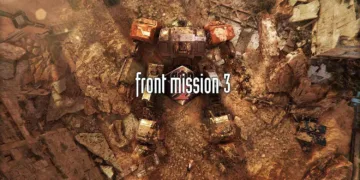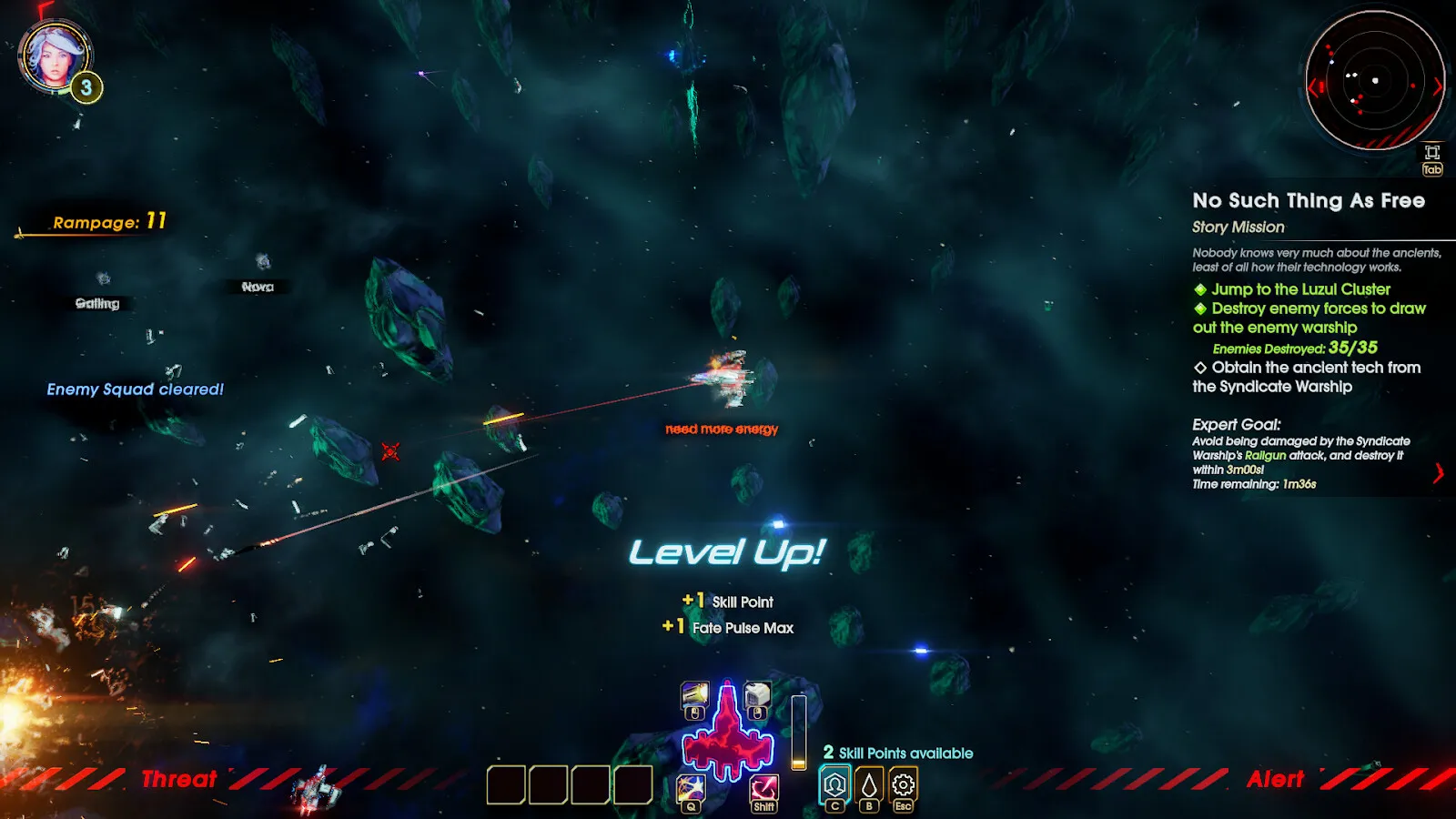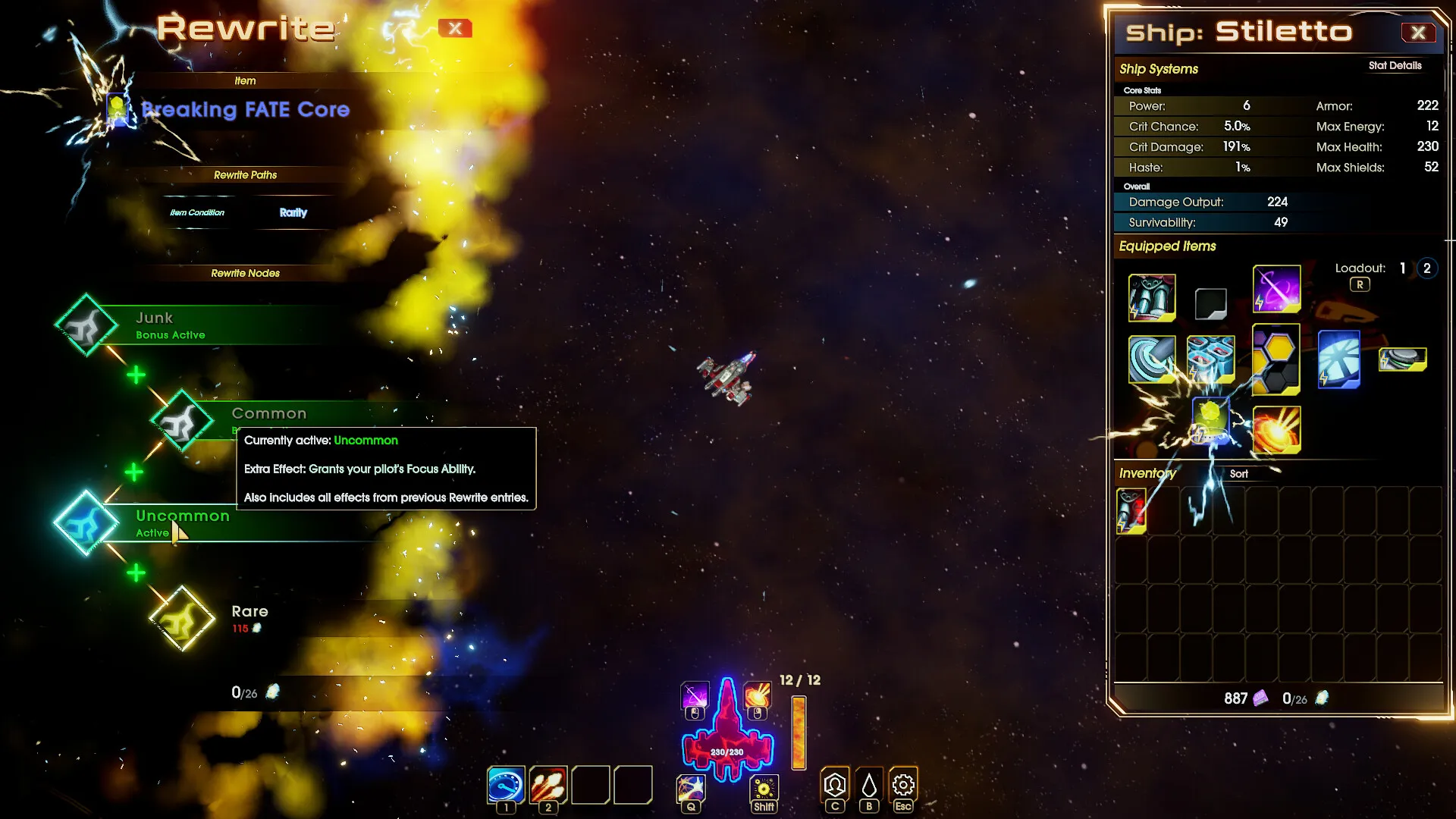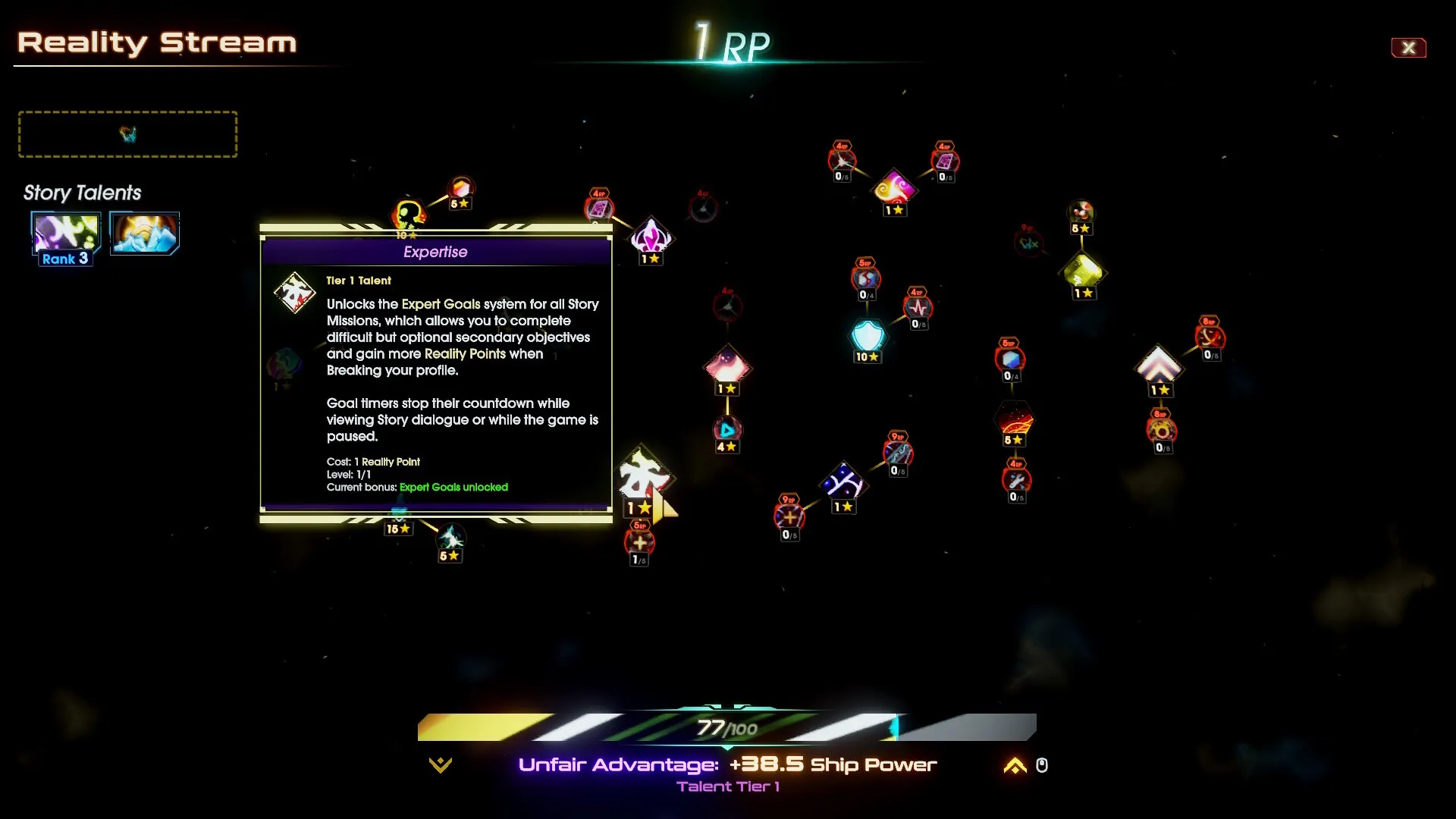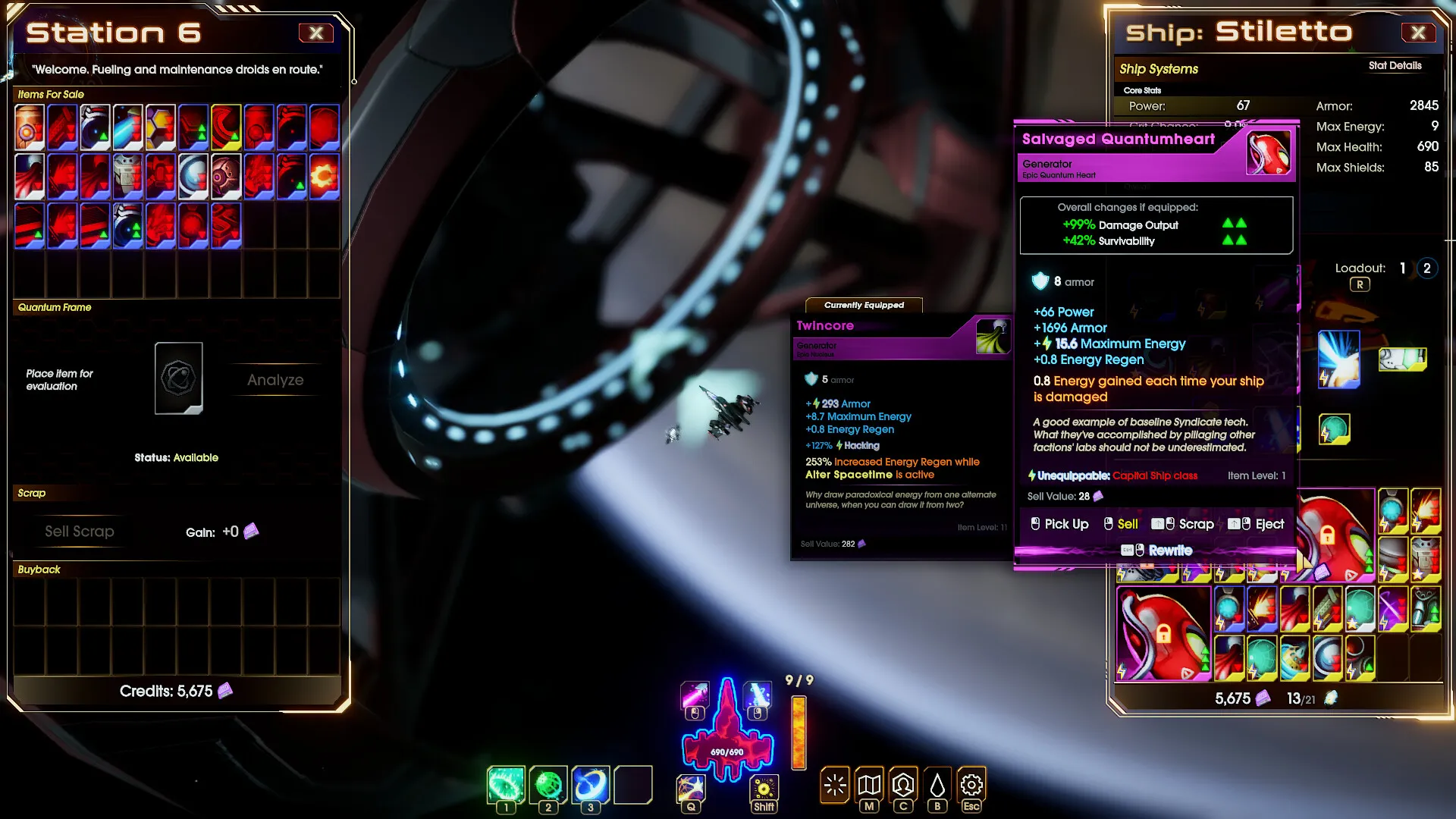The game unfolds in a space setting where the emptiness of the cosmos serves as a backdrop for endless conflict and unexpected abilities.
Here, you assume the role of a battle-hardened mercenary who discovers the capacity to modify the very fabric of existence.
The game constructs a futuristic arena filled with interstellar skirmishes, where each encounter carries the weight of personal empowerment and the risk of unforeseen consequences.
The narrative centers on the acquisition of a remarkable power that alters the natural order. This power, acquired almost by chance, thrusts the player into scenarios where every decision affects not just immediate survival but also the evolution of the game’s unfolding events.
As the storyline progresses through carefully placed text sequences and brief cinematic moments, the tension between gaining strength and facing the repercussions of that strength becomes a persistent theme.
Characters speak through quick on-screen messages, and pivotal moments are captured in brief visual interludes that reveal fragments of a larger mystery.
The method of story delivery intertwines with gameplay in a way that ensures each action contributes to a larger narrative rhythm.
The intermittent dialogue and narrative prompts interlace with fast-paced combat and strategic planning, crafting an environment where every maneuver holds narrative significance.
While some elements may interrupt the flow of action, they also contribute to a layered understanding of a universe where power carries both promise and peril. Comparisons to other games in the genre highlight this delicate integration of choice and consequence, inviting players to weigh every decision carefully.
Mechanics in Motion: The Dance of Combat and Progression
The control scheme employs a twin-stick setup where the left stick directs your movement and the right stick handles shooting in all directions.
This configuration creates a fluid combat experience that merges precise maneuvering with quick targeting. Encounters are designed to test reflexes and strategic positioning against waves of enemies.
The action unfolds in an arcade-style manner, and players experience a steady rhythm of attack, evade, and regroup. This system draws parallels to top-down shooters seen in indie titles, ensuring that both casual players and veterans find the challenge engaging without feeling overwhelmed by complexity.
The progression system introduces a leveling mechanic that enhances attributes and unlocks new abilities as you progress. Each skill acquired plays a significant role in shaping your combat style, and stat improvements allow for adjustments tailored to your preferred approach.
The loot system offers items in various rarities, and each piece of equipment can alter your build in subtle ways. Equipment upgrades and stat modifications are pivotal, and the diversity in gear encourages experimentation with different playstyles. This aspect of the game aligns with other RPGs that emphasize character customization through detailed statistical upgrades and inventory management.
The game divides its objectives into story-driving missions and supplementary challenges that offer a mix of variety and replay value. Main missions are closely tied to the narrative, providing moments that push the story forward through structured events.
In contrast, side missions serve as a resource for additional rewards and introduce tasks such as intercepting targets, neutralizing enemy ships, securing key items, and executing demolitions. These missions interlace with the primary gameplay, ensuring that players receive consistent engagement and opportunities to refine their tactical approach.
A system of gradual progression and restart mechanics is woven throughout the experience. Incremental elements allow minor improvements during each run, which accumulate as you continue playing.
The respawn mechanism is designed to minimize downtime by restarting at a designated entry point after defeat.
This structure keeps players engaged by providing continuous opportunities for refinement without severe penalties. The integration of these systems results in a gameplay loop that is both challenging and inviting, offering a balanced mix of risk and reward.
Breaking the Rules: A Closer Look at the “Rewrite” Mechanic
The game introduces a system that allows you to alter the conditions of each encounter by directly adjusting weapon properties, item statistics, and character abilities.
This system lets you modify aspects such as the size of a weapon or the attributes of your gear during a run. By interacting with this mechanic, you can transform standard equipment into customized tools that suit your immediate needs.
Players have the option to explore different configurations by tweaking in-game rules. This element of experimentation means that each encounter can be approached with a tailored strategy.
The mechanic demands that you think about how each adjustment will affect both your offensive and defensive tactics. By offering choices that impact combat, exploration, and resource management, it provides a layer of decision-making that affects how challenges unfold.
The system is designed so that resetting the timeline is a choice you make. You can opt into these resets at critical moments, triggering a cycle that both challenges and rewards your persistence.
Each reset is more than just a return to the starting point—it is an opportunity to unlock new options and increase your overall effectiveness. This choice encourages careful planning and risk assessment without imposing a hard penalty for failure.
Performance during missions, survival duration, and overall gameplay contribute to earning a special currency.
These points accumulate over successive cycles, allowing you to invest in permanent enhancements and unlock additional game features. The ability to adjust difficulty and access new mechanics over time encourages a thoughtful balance between immediate combat needs and long-term growth.
Sight and Sound: Crafting an Immersive Experience
The game employs a top-down view set in a futuristic space environment. Ship designs are detailed, offering clear outlines and recognizable features that give each vessel its own character.
The space settings include shifting light effects and carefully designed particle displays that contribute to a memorable look, making each moment on screen feel carefully constructed.
On-screen elements like menus, HUD, and text boxes are interwoven into the gameplay. They are placed thoughtfully so that they support the flow of action.
Occasional interruptions from narrative text challenge the player, but they serve a purpose in reinforcing story details. The interface, though busy at times, remains functional and clear, ensuring that players can access key information without being overwhelmed by clutter.
The soundtrack blends electronic tones and ambient cues that pair neatly with the sci-fi setting. Sound effects carry a weight that underscores the intensity of combat and exploration, keeping the player alert during high-energy sequences.
With little reliance on character voices, the audio design focuses on instrumental and environmental sounds that complement the visual elements. The music adjusts smoothly with shifts in gameplay pace, providing a backdrop that is both engaging and supportive of the game’s mood.
The interplay between visuals and audio creates an experience that pulls the player deeper into the game world.
Light, particle effects, and crisp sound cues come together to form a cohesive presentation. Although some flashing elements may require caution for sensitive viewers, the design choices encourage engagement.
Comparisons with other top-down titles in the indie space reveal a careful balance between style and usability, leaving players with an experience that feels both thoughtfully assembled and inviting for a broad range of gamers.
Maps and Missions: Evolving Challenges
The game presents a collection of space arenas that combine open exploration with confined combat zones. Each environment is crafted with distinct layouts that encourage players to explore hidden pathways and strategically use cover during battles.
The design of these levels not only offers varied backdrops for combat but also weaves in narrative cues that hint at the larger story at work. This thoughtful construction allows players to uncover secrets and environmental storytelling as they navigate each zone.
The structure of missions is split into main and side objectives. Main missions move the story forward with clear narrative markers, while side missions provide additional challenges and rewards.
Objectives range from intercepting enemy convoys and neutralizing specific targets to gathering key items that add depth to the game’s progression system. This mix of tasks keeps the gameplay dynamic and requires players to adjust their tactics frequently, making each run feel fresh.
A central hub acts as a home base where players manage their resources, upgrade equipment, and plan future strategies. Within this space, you can shop for new gear, store collected loot, and enhance both your ship and character abilities.
The upgrade system is designed to let players tailor their progress, ensuring that choices made in the home base have a direct impact on subsequent missions and encounters.
The game’s cyclical progression model offers repeated runs that build on previous efforts. Each cycle provides incremental rewards and permanent upgrades that make future runs distinct.
Although repetition is inherent in the gameplay loop, the inclusion of metagame rewards and new challenges encourages sustained engagement, inviting players to experiment with different strategies and unlock new paths over time.
Engineered Performance: A Close Look at the Technical Experience
The game runs smoothly across a range of hardware, delivering high frame rates even during intense combat sequences.
Load times remain minimal, ensuring that gameplay flows without unnecessary interruptions. This level of optimization proves essential during fast-paced combat, where every split-second decision counts.
Controls are responsive and menus react promptly to player input. In-game prompts and interface elements appear with clear precision, supporting quick decision-making during critical moments. Occasional interruptions from narrative text may momentarily shift focus, yet they rarely impede the overall ease of play.
The interface remains functional, allowing players to access vital information without confusion.
The blend of technical efficiency with a clear, user-friendly design creates an experience that suits both casual players and those who demand deep tactical control.
The game’s processing power supports a fluid combat experience while maintaining clarity in environmental details and HUD elements. Minor interface quirks do not detract from the consistent performance, which plays a significant role in keeping the player immersed in the action.
This robust system ensures that technical aspects serve the gameplay rather than hinder it, inviting a diverse audience to enjoy a well-tuned, engaging experience.
The Review
Reality Break
The game offers a refined experience with a solid balance of player choice, strategic combat, and an engaging narrative. Decisions matter, and the mechanics support dynamic progression throughout each run. Minor text interruptions and interface quirks do little to detract from its clear graphics and smooth performance. It remains inviting for both casual players and dedicated enthusiasts alike.
PROS
- Dynamic combat with responsive twin-stick controls
- Engaging narrative delivered via text and cutscenes
- Extensive customization through gear and skills
CONS
- Repetitive mission structures in parts
- Occasional interruptions from on-screen text







































